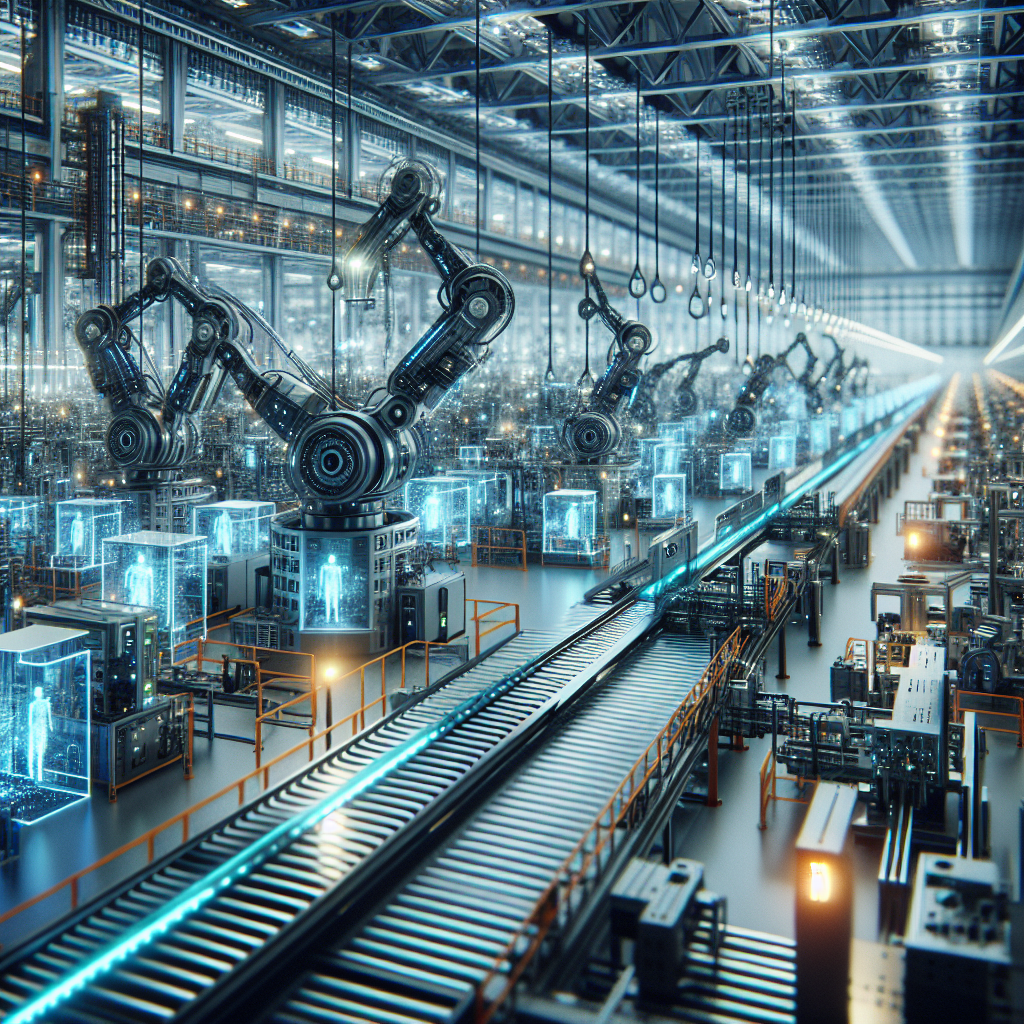The Rise of Smart Factories with AI Technology
In recent years, the manufacturing industry has seen a significant shift towards the adoption of smart factories powered by artificial intelligence (AI) technology. These smart factories are revolutionizing the way products are made, improving efficiency, quality, and productivity. In this article, we will explore the key components of smart factories, the benefits they offer, and the challenges they face.
What is a Smart Factory?
A smart factory is a highly automated and connected manufacturing facility that leverages advanced technologies such as AI, machine learning, and the Internet of Things (IoT) to optimize production processes. These technologies enable real-time monitoring, analysis, and control of manufacturing operations, leading to improved efficiency, flexibility, and responsiveness.
Key Components of Smart Factories
1. Internet of Things (IoT): IoT devices such as sensors, actuators, and RFID tags are used to collect data from machines, equipment, and products in the factory. This data is then transmitted to a central system for analysis and decision-making.
2. Artificial Intelligence (AI): AI algorithms are used to analyze the vast amount of data collected from IoT devices and make predictions or recommendations to optimize production processes. AI can also be used to automate repetitive tasks, such as quality control and maintenance scheduling.
3. Robotics: Robots are used in smart factories to perform a wide range of tasks, from assembly and welding to material handling and packaging. These robots are equipped with AI-powered vision systems and sensors to navigate their environment and interact with humans safely.
4. 3D Printing: Additive manufacturing, or 3D printing, is increasingly being used in smart factories to produce complex parts and prototypes quickly and cost-effectively. 3D printing technology allows manufacturers to customize products and reduce waste.
Benefits of Smart Factories
1. Improved Efficiency: Smart factories enable real-time monitoring of production processes, identifying bottlenecks and inefficiencies before they impact production. AI algorithms can optimize scheduling, resource allocation, and maintenance, leading to increased productivity.
2. Enhanced Quality: AI-powered quality control systems can detect defects and anomalies in real-time, preventing faulty products from reaching customers. This results in higher quality products and lower rework costs.
3. Greater Flexibility: Smart factories are designed to be agile and adaptable to changing market demands. Manufacturers can quickly reconfigure production lines, change product specifications, and scale production up or down as needed.
4. Cost Savings: By optimizing production processes, reducing waste, and minimizing downtime, smart factories can lower manufacturing costs and improve profitability. Predictive maintenance enabled by AI can also extend the lifespan of equipment and reduce maintenance costs.
Challenges of Smart Factories
1. Data Security: The interconnected nature of smart factories makes them vulnerable to cyber attacks and data breaches. Manufacturers must invest in robust cybersecurity measures to protect sensitive data and intellectual property.
2. Workforce Skills: The implementation of AI and automation in smart factories requires a skilled workforce capable of operating and maintaining advanced technologies. Manufacturers need to invest in training and upskilling programs to ensure their employees can adapt to the changing manufacturing landscape.
3. Integration Complexity: Integrating disparate systems and technologies in a smart factory can be challenging, requiring careful planning and coordination. Manufacturers need to work closely with technology vendors and partners to ensure seamless integration and interoperability.
4. Regulatory Compliance: Smart factories must comply with industry regulations and standards related to data privacy, product safety, and environmental sustainability. Manufacturers need to stay informed about evolving regulations and ensure their operations meet compliance requirements.
FAQs
Q: How can AI improve quality control in smart factories?
A: AI-powered quality control systems can analyze data from sensors and cameras to detect defects, anomalies, and deviations from quality standards in real-time. This enables manufacturers to identify and address quality issues before they impact production.
Q: What are the key benefits of adopting 3D printing technology in smart factories?
A: 3D printing technology allows manufacturers to produce complex parts and prototypes quickly and cost-effectively. It enables customization, reduces waste, and accelerates product development cycles.
Q: How can smart factories improve sustainability and reduce environmental impact?
A: Smart factories can optimize energy usage, reduce waste, and minimize resource consumption through AI-powered predictive maintenance, real-time monitoring, and data-driven decision-making. This leads to lower carbon emissions and a more sustainable manufacturing process.
Q: What role do robots play in smart factories?
A: Robots are used in smart factories to automate repetitive tasks, increase production efficiency, and improve worker safety. They can perform a wide range of tasks, from assembly and welding to material handling and packaging.
Q: How can manufacturers ensure the security of data in smart factories?
A: Manufacturers can implement robust cybersecurity measures, such as encryption, access controls, and network segmentation, to protect sensitive data and intellectual property. Regular security audits and employee training are also essential to mitigate cybersecurity risks.
In conclusion, the rise of smart factories with AI technology is transforming the manufacturing industry, offering numerous benefits in terms of efficiency, quality, flexibility, and cost savings. While there are challenges to overcome, such as data security and workforce skills, the potential of smart factories to revolutionize the way products are made is undeniable. By embracing advanced technologies and investing in the necessary infrastructure and training, manufacturers can position themselves for success in the era of Industry 4.0.

